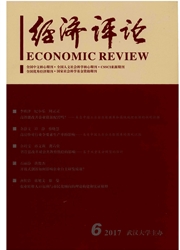

 中文摘要:
中文摘要:
本文运用环境范围调整测度(RAM)模型测算了中国112个环保重点城市2005—2010年的绿色发展效率、无效率来源及减排方式,并使用Bootstrap截断回归模型对城镇化与绿色发展效率的关系进行了实证研究。本文的主要结论有:我国各地区的绿色发展效率主要呈倒U型和三次型变化,区域差异明显,中西部地区的部分城市群绿色发展效率要高于东部地区的一些城市群;污染物排放无效率是总无效率的主要源泉;大部分城市在面对经济发展和节能减排的双重压力时,主要选择自然减排方式;居民城镇化对绿色发展效率有显著的促进作用,对土地城镇化有显著的负向影响,而就业城镇化、经济城镇化和综合城镇化对绿色发展效率则产生显著的先抑制后促进的影响。
 英文摘要:
英文摘要:
This paper applies Environmental RAM model to measure green development efficiency, sources of inefficiency and emission reduction method of 112 key environmental protection cities in China over the period 2005 to 2010. We then apply bootstrap truncated regression model to empirically examine the relationship between urbanization and green development efficiency. The major conclusions are as follows : First, the green development efficiency in China' s different regions basically shows an inverted U -shaped and cubic form trajectory and has a very different performance among regions. Second, the green development efficiency of eastern regions is higher than that of the central regions and that of the western regions, but some urban agglomerations' green development efficiency in central or western regions are higher than that of the eastern regions. Third, the excess of pollutant emission is the main source of total inefficiency, followed by the overuse of energy, labor and capital. What is more, most cities mainly choose natural reduction when facing the pressure of economic development, energy conservation and emissions reduction. Finally, population urbanization has a significant role in promoting the green development efficiency, while land urbanization plays a negative impact, and employment urbanization, economic urbanization and comprehensive urbanization have a negative impact at first, and then exert positive effects on the green development efficiency.
 同期刊论文项目
同期刊论文项目
 同项目期刊论文
同项目期刊论文
 期刊信息
期刊信息
